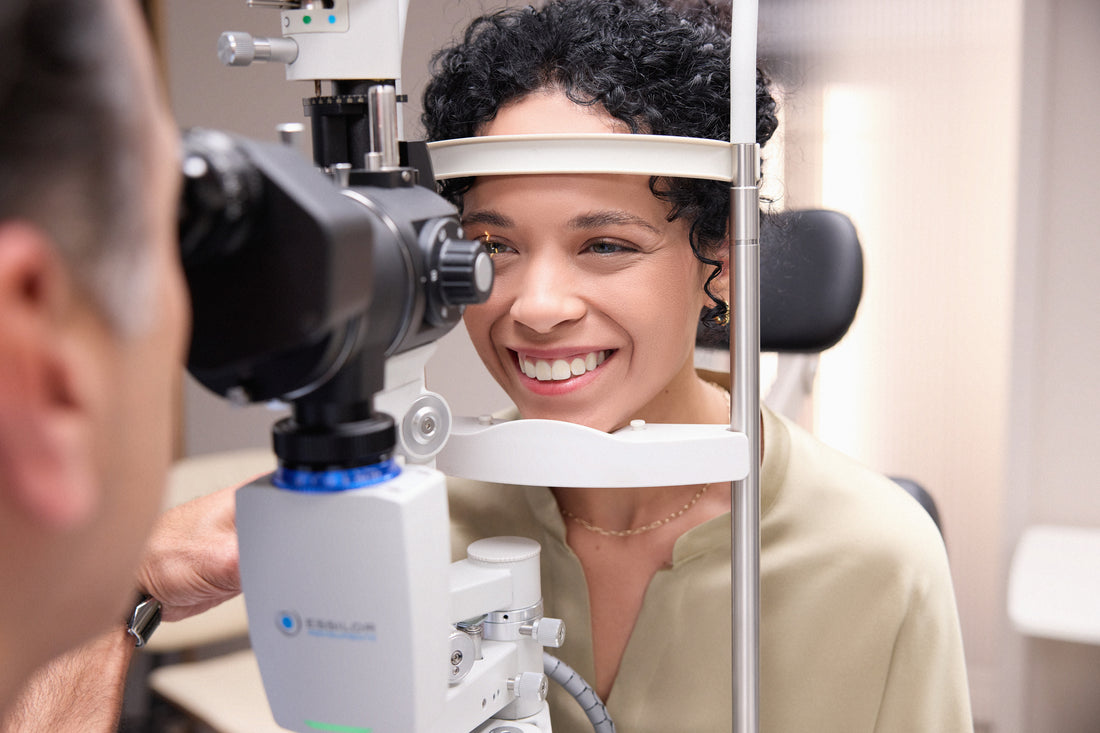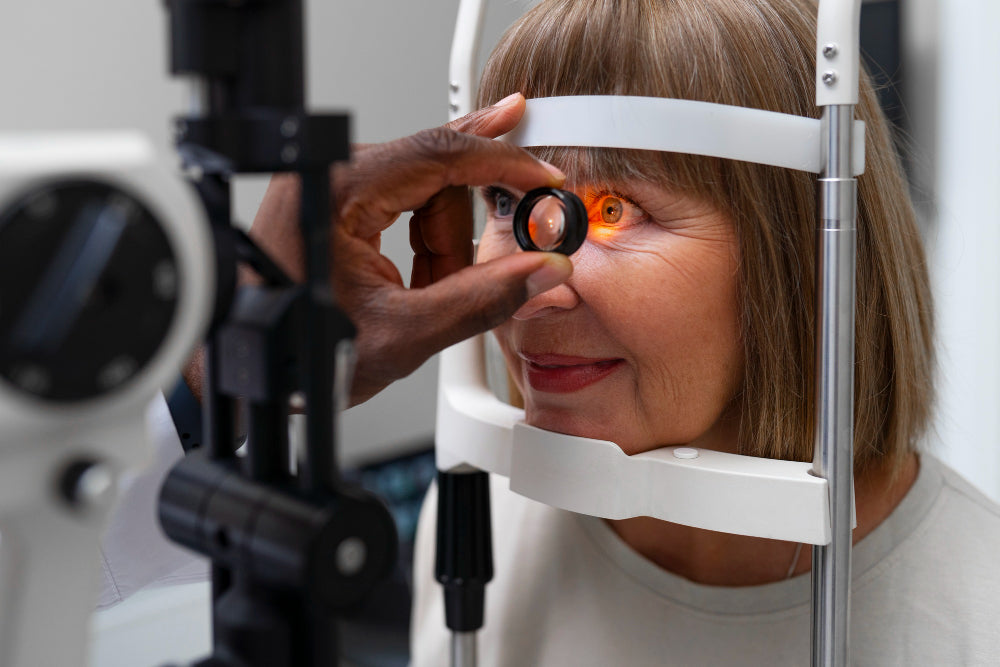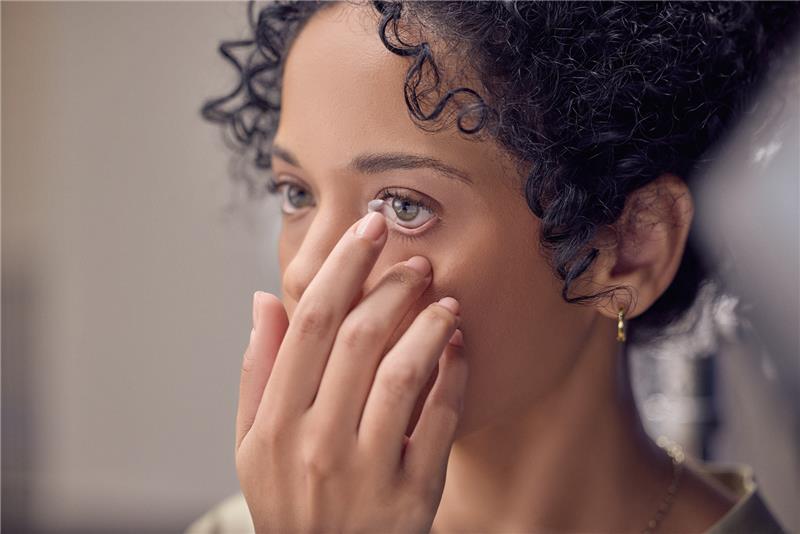Your eyes are the windows to the world, but how often do you consider what keeps them healthy and functioning? From routine check-ups to advanced diagnostic tools, eye tests are essential for maintaining clear vision and preventing serious conditions.
Various types of eye tests, including refractive evaluation, eye health screening and advanced imaging, are designed to assess specific aspects of eye health.
Curious about which tests might benefit you the most? Let’s dive into the different types of eye tests used on adults and explore how these exams play a vital role in your eye health.
Keep reading to discover the full range of eye exams, their unique purposes, and how they work together to protect your vision for years to come!
The Importance of Eye Tests
Eye tests are not just about checking how well you can see; they are necessary for diagnosing various conditions that may affect your vision and overall health. Many eye diseases, such as glaucoma or diabetic retinopathy, can develop without noticeable symptoms.
Therefore, knowing about the range of eye exams available can empower you to take charge of your eye health.
Common Types of Eye Tests
Here’s a breakdown of the different types of eye tests you might encounter during a comprehensive eye exam:
1. Visual Acuity Test

This is typically the first test performed during an eye exam. You’ll be instructed to read letters from an eye chart positioned at a specific distance. This test measures how clearly you see at various distances and helps determine if you need glasses or contact lenses.
2. Refractive Assessment
During this test, your optometrist will use a device called a phoropter to determine your exact prescription for glasses or contacts. You will look through different lenses and indicate which ones help you see more clearly.
3. Slit-lamp Examination
A slit lamp is a microscope with a bright light that allows your optometric physician to examine the structures of your eyes in detail. This test helps identify conditions like cataracts, macular degeneration, and corneal injuries.
4. Tonometry

Tonometry measures the pressure inside your eyes, which is vital for detecting glaucoma. This test may involve a puff of air directed at your eye or a small probe placed on the surface after applying numbing drops.
5. Retinal Examination
A retinal examination allows the doctor to view the back of your eyes, including the retina, optic disc, and blood vessels. It can reveal signs of serious conditions such as diabetes or hypertension. Vision Source Rio utilizes Optomap for a more comprehensive retinal evaluation on every patient.
6. Visual Field Test
This test assesses your peripheral vision by asking you to focus on a central point while noting when lights appear in your side vision. It helps detect blind spots that may indicate glaucoma or other neurological issues.
7. Color Vision Test
The screening test uses colored plates with numbers embedded to check for color blindness and can indicate other eye health issues. More advanced diagnostic color vision testing checks for nerve damage associated with glaucoma and macular degeneration just to name a few.
8. Pupil Function Test
This test evaluates how well your pupils respond to light and can provide insights into your overall neurological health.
9. Eye Movement Testing
This assessment checks how well your eyes work together, helping to identify conditions like strabismus (crossed eyes) or amblyopia (lazy eye).
6 Advanced Eye Exam Tests You Should Know

Advanced eye tests play an essential role in diagnosing and managing complex vision and eye health concerns. These tests go beyond routine examinations, offering detailed insights into the structure and functionality of your eyes and your overall systemic health.
Let’s explore six advanced eye tests and how they help protect your vision.
1. Advanced Glaucoma Screening
At Vision Source Rio, all patients over 40 or with a family history of glaucoma receive Ocular Response Analysis, or ORA Intraocular Pressure testing. ORA assesses not only the pressure inside the eye, but also how firm the cornea is.
This test allows us to predict with high sensitivity who will go on to develop glaucoma, and offer more advanced testing to determine if and when this will occur in these patients.
2. Optomap Retinal Imaging

Optomap Retinal Imaging is a digital imaging technique that captures high-definition scans of the retina. This test is ideal for monitoring and screening for conditions like glaucoma, macular degeneration, and retinal detachment. This information can not only be vision-sparing, but also life-saving.
At Vision Source Rio, because we screen all patients with Optomap, we have been the first to detect leukemia, brain tumors, aides, Lupus, and many other life threatening illnesses in our patients. Optomap retinal imaging also allows us to detect retinal detachments when they are early and easier to repair.
In addition, Optomap helps us diagnose and treat glaucoma, macular degeneration, diabetic retinopathy, and countless other sight-threatening conditions. Early detection and treatment are key to enhanced patient outcomes.
3. Optical Coherence Tomography (OCT)
OCT is like an ultrasound for your eyes, but instead of sound waves, it accesses light waves to capture cross-sectional retinal images as well as anterior eye scans. This test provides a detailed view of the retina’s layers, helping to identify early signs of macular degeneration, diabetic eye disease, and glaucoma.
In addition, scans can be taken of the front of the eye to help fit specialty contact lenses and further assess the underlying cause of glaucoma. During the procedure, you’ll rest your chin on a support while the instrument scans your eye. The process is quick, non-invasive, and offers unparalleled detail about retinal health and anterior eye structures.
Optical Coherence Tomography Angiography (OCTA) checks the health of the blood vessels in your retina, and offers an alternative to the old invasive method of fluorescence angiography which required dye to be injected into the patient’s blood stream and a series of uncomfortable bright photos taken while the eyes were dilated.
Assessing the blood flow in the retinal vessels allows for enhanced management of diabetic retinopathy, macular degeneration and glaucoma.
4. Advanced Macular Testing
At Vision Source Rio, we utilize 2 unique types of advanced macular testing:
Adapt Dx can detect the earliest signs of macular degeneration by testing a patient’s dark adaptation. With this type of testing, macular degeneration can be detected 2 to 3 years prior to any clinical signs or symptoms arising. This test is noninvasive and takes from 6 to 20 minutes to complete, depending on the individual.
Macula-Risk NXG testing determines a patient’s ultimate risk and timeline for preventative testing to help prevent vision loss with macular degeneration. During this test, a cheek swab is performed and sent off to the lab where genetic factors are analyzed.
Genetic markers coupled with lifestyle choices ultimately determine the progression of macular degeneration. Macula-Risk testing allows us to customize both your diagnostic testing schedule and your supplement regimen.
When it comes to supplementation, one size does not fit all. Macula-Risk provides us with information specific to you that allows us to tailor your supplementation profile directly to the way your genotype responds to therapy.
5. Specialized Color Vision Testing
The Konan ColorDx Test is a high-precision diagnostic device for assessing both congenital and acquired color vision deficiencies. Developed in conjunction with the USAF, Konan ColorDx testing allows us to screen for early deficiencies in yellow/blue firing cones which is a highly specific early indication of nerve damage.
These findings influence the way we treat macular degeneration, glaucoma, diabetic retinopathy and a host of other eye disorders.
6. Advanced Binocular Vision Testing
Advanced testing with Neurolens virtual reality headsets can help identify often missed ocular alignment issues. With the extended amount of time we spend on screens, eyes most often focus behind the screen, but sometimes even focus in front of the screen.
This leads to eye strain, postural discomfort and migraines. Neurolens utilizes contoured prisms to properly align the eyes at all distances to ease fatigue and provide for a more pleasant and productive work day.
Traumatic brain injury patients almost invariably have abnormalities in the ways their eyes function together. There is no better way to assess these disparities than with Neurolens virtual reality testing.
Custom contoured prisms can be incorporated into prescription lenses to ease the symptoms of intense eye strain and double vision and quite literally help these patients get their lives back.
What are the Different Types of Eye Exams for Adults?
Adult eye exams are tailored to address age-related concerns. Whether you’re in your 20s or your 60s, regular check-ups help maintain healthy vision. At Vision Source Rio, we offer:
- Comprehensive Eye Exams: Ideal for detecting refractive error, binocular vision disparities, and preventative eye health evaluations.
- Specialized Testing: For individuals with specific concerns like dry eyes, diabetes, glaucoma or macular degeneration. We also address binocular vision dysfunction, myopia management, and traumatic brain injury.
Experience Comprehensive Care at Vision Source Rio
At Vision Source Rio, we offer a full suite of services, from comprehensive eye exams to specialized care. Our commitment to advanced technology ensures accurate diagnoses and effective treatment for every patient.
NOW is the time to prioritize your vision. Book your appointment today, and let us help you experience life more clearly and comfortably.





